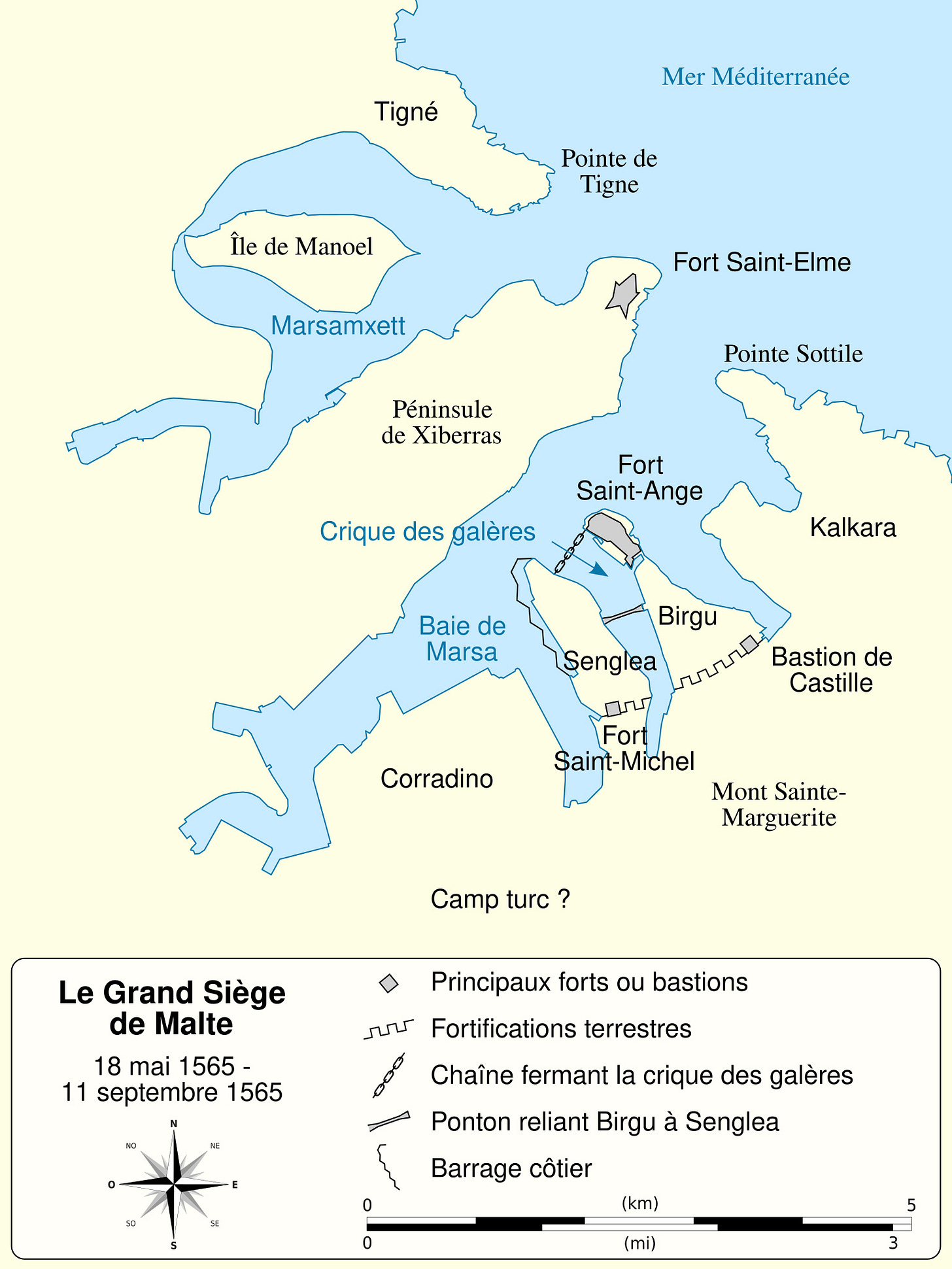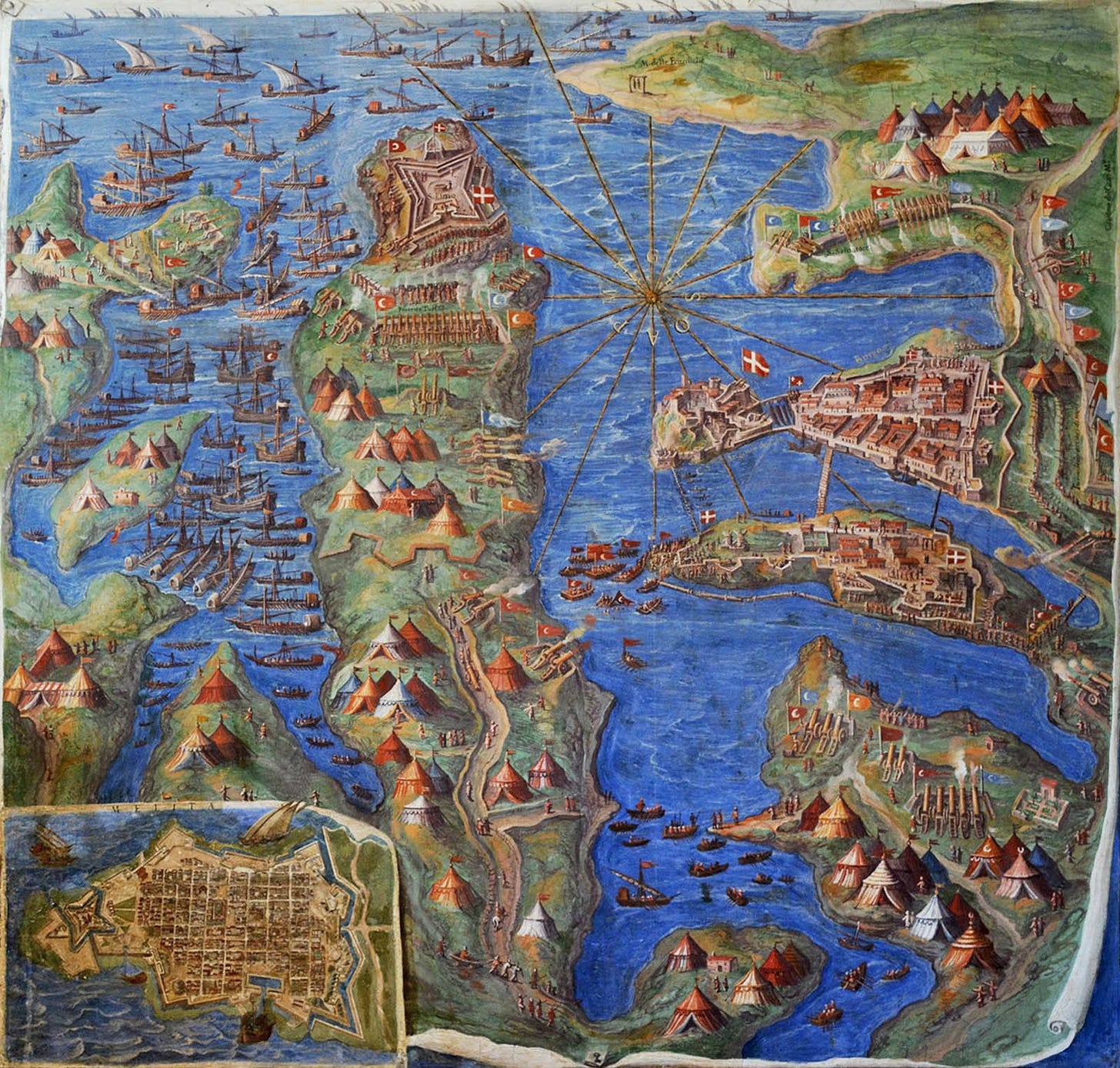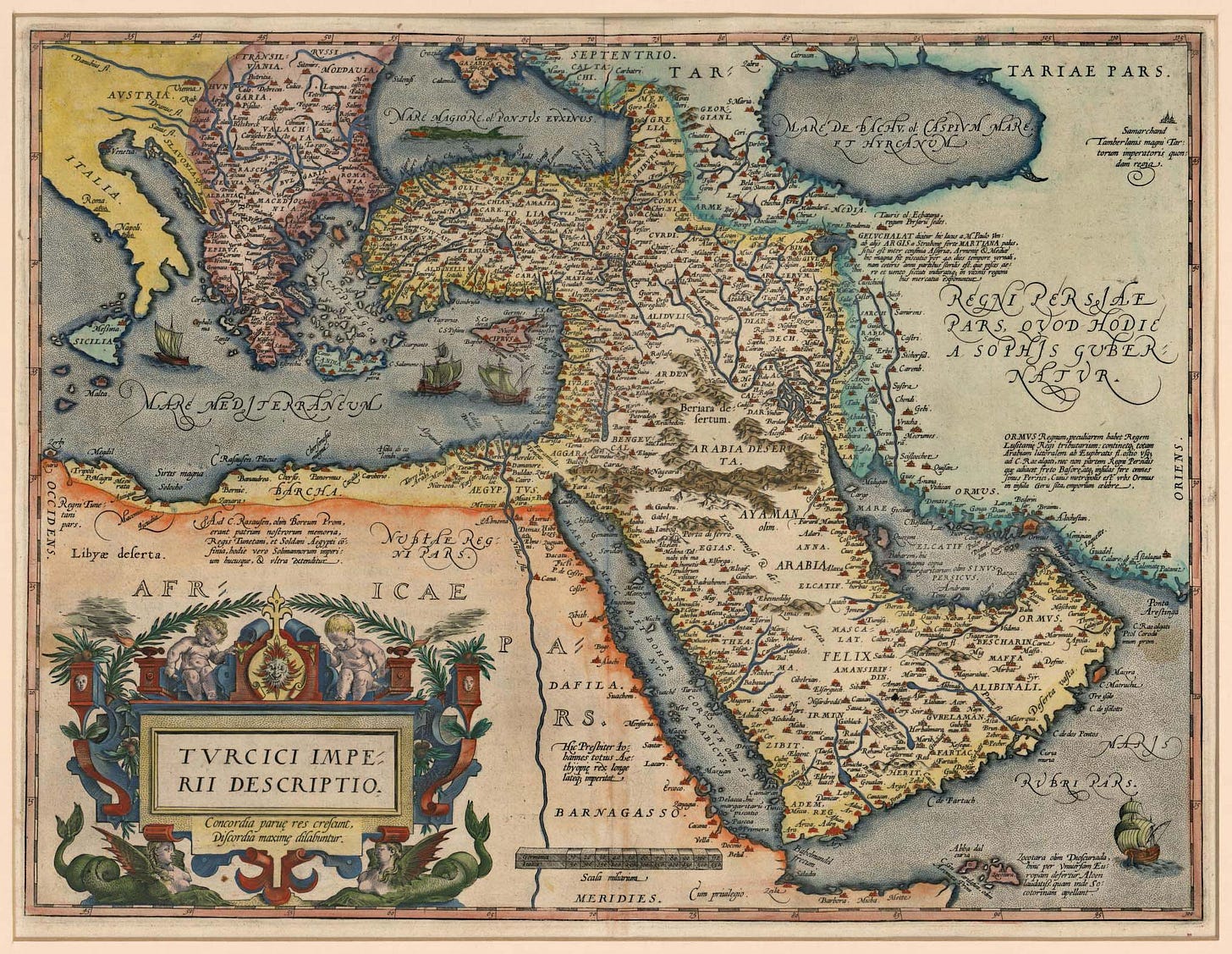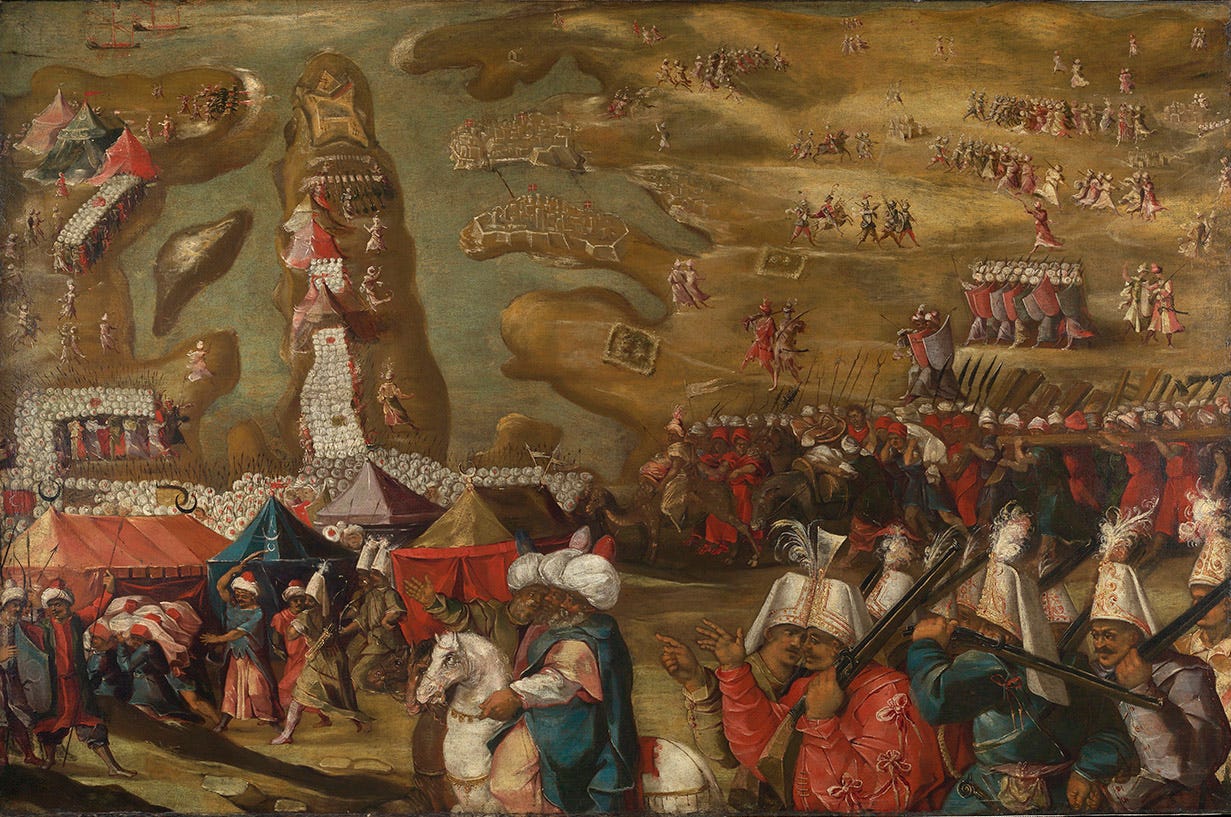The Great Siege of Malta - Victory Despite All Odds
As one of the greatest triumphs against the odds in all history, the Great Siege of Malta is a beacon of inspiration for any who face a seemingly hopeless situation...
460 years ago last Sunday, all Christendom held its breath.
On the 18th May 1565, the might of the Ottoman Empire — at the height of its power and under its greatest sultan — fell upon the small island of Malta, and the brave brotherhood of Christian knights who had sworn to defend it.
The heroic defiance of the Order of Saint John, and the inspirational leadership of their Grand Master in the face of unfathomable odds, would be enshrined forever in the annals of world history. Even a century later, the philosopher Voltaire would write that “nothing is better known than the Siege of Malta”.
But this last great battle of a crusader order was much more than a triumph of mere military strategy. It was an extraordinary testament to the timeless power of faith to steel the spirits of men, and to rally them to such deeds that death does not end their story, but marks the beginning of their legend.
Today, we explore many great episodes of the Great Siege of Malta — from the fighting at Fort Sant’Elmo to the storming of Senglea and the daring gamble at Mdina. It all makes for one of the all-time greatest examples of resilience and what just a few brave men can do when inspired by the divine…
The Crescent and the Cross
For over a hundred years after the fall of Constantinople in 1453, Christian Europe struggled to hold the line in the face of the Ottoman onslaught.
With the last remnants of the Roman Empire in the East gone, year after year one Christian principality after another fell to the seemingly unstoppable Turk. Great indeed was the misfortune of the West that the death of one sultan only ever seemed to give rise to one more fearsome than the last. Mehmet the Conqueror had vanquished the Romans, Serbians, Albanians, Moldavians, Wallachians and Bosnians. Bayezid II bloodied the Persians, Poles and Venetians, while under Selim I the Grim, all Egypt and the Levant were overrun.
Yet in 1520, with the Ottoman Empire already one of the largest the world had ever seen, the chain of Muslim triumph remained unbroken still, as the greatest of all its sultans ascended to the throne — Suleiman the Magnificent.
The mosques of Islamic Constantinople, swelled by Suleiman’s limitless patronage, towered higher than the basilicas of Christian Rome, and the armies of the Sultan were unleashed. Within a year, Belgrade had fallen, and within two, the island of Rhodes, driving the Knights Hospitaller of Saint John of Jerusalem — the military order first founded to provide medical treatment to the poor, and later safeguard Christian pilgrims to the Holy Land — into exile once more.
For eight years the Knights would wander without a home, before Pope Clement VII and Holy Roman Emperor Charles V agreed in 1530 to grant the Order the islands of Malta and Gozo, along with the African port of Tripoli, in exchange for the annual tribute of a single Maltese falcon.
Few could have imagined however, that within a single generation, the Knights of Saint John would find themselves on the front line once more…
The Corsairs Close In
Having dismembered the Kingdom of Hungary and lashed the very walls of Vienna, on land the Ottomans now constituted a near existential threat to the Holy Roman Empire itself. At sea, the Turks were snaking their way across the North African coast, spearheaded by the unholy alliance between the Sultan and the ruthless pirates of the Muslim world — the Barbary Corsairs.
When the reign of terror of the Corsair Hayreddin Barbarossa came to an end in 1546, it would prove scant respite for Christendom. For his protégé and successor Dragut, having vanquished the fleet of the Holy League at Preveza and ravaged the Italian and Sicilian coasts, was nothing short of a military genius.
The Knights of Saint John, increasingly exposed, nevertheless pursued with diligence their charge to harass the logistics of the Turk. This they would do with enough efficacy that in 1551, Dragut lashed out. While the Order repelled his expeditionary force on Malta itself, they were unable to prevent the Corsairs from sacking Gozo and enslaving almost her entire population. Weeks later, Tripoli fell, and Dragut defiled the knightly bastion and transformed her into a pirate haven that would plague Christian shipping for three centuries.
Compounding the Order’s woes was the loss of the once distinguished English division within its ranks following the Protestant Reformation, culminating in the seizure of the Knights’ property in 1540 by act of the English Parliament. Hopes of reconciliation under the Catholic Mary I alas proved short lived, as Elizabeth I definitively suppressed the Order in Britain in 1558.
In May 1560, the efforts of King Philip II of Spain to liberate Tripoli met with disaster too, when Dragut and the Ottoman admiral Piali Pasha destroyed the Christian navy off the coast of Djerba. But it was four years later, after one embarrassing loss of merchant vessels too many, that the sixty nine year old Suleiman resolved to wipe the Knights out once and for all.
Knowing what was coming, the newly elected Grand Master of the Order, Jean Parisot de la Valette, called upon the powers of the West, and issued a summons to Order priories across Europe, commanding all knights to present themselves in Malta at once. So too did he give the order to harvest all crops beyond the walls, commence food and water rationing, and prepare defensive positions.
Time was not on their side, for on the 18th May 1565, just thirty five years after the Knights had first settled on the island, almost two hundred vessels of the great Ottoman armada were sighted off the coast of Malta…
The Siege Begins

To their great dishonour, all the Christian powers of Europe but two, distracted or else fearful of Suleiman, fell silent before the Order’s call. King Philip II of Spain sent the few men he could spare, while Pope Pius IV sent 10,000 crowns to contribute to the defence.
Grand Master La Valette would thus have at his disposal around 9,000 men, of whom just 600 were Knights of the Order, while the rest consisted of Maltese militia, Italian and Spanish volunteers and, in recognition of the severity of the hour, freed galley slaves.
Arrayed against them now, and charged with the invasion of an island barely eight miles across, was a host that exceeded 40,000 fighting men, including 6,000 of the Sultan’s crack Janissary Corps, with the ready possibility of frequent Ottoman and Corsair reinforcement by sea. Commanding the land force was the Vizier Mustapha Pasha, while the navy answered to Admiral Piali Pasha, with both however under orders to submit — to their chagrin — to the authority of Dragut himself following the latter’s arrival.
Sailing gradually before the eyes of their foes, the Ottoman host disembarked on the Sciberras Peninsula, barely three hundred metres across the Marsa Bay from the Knight’s headquarters at Senglea and Birgu. On the tip of the Sciberras was the sole Maltese redoubt that prevented immediate Turkish domination of the entire peninsular coastline — the Fort Saint Elmo.
Its hastily reinforced walls however, manned by just 120 knights and a smattering of the men from Spanish Sicily, would now have to withstand the most powerful artillery batteries in the world…
The Heroism of Saint Elmo
Across the bay, further thousands of Turkish troops marched upon the citadels of Senglea and Birgu, fortifying the Hill of Santa Margherita for their cannon. Once in position, the excruciating wait of the Christians was over. On the 21st May 1565, violence erupted on Malta, as the Ottoman vanguard stormed the land walls from the South.
Taking command, La Valette, lance in hand, repelled the assaults on both as Knight, Maltese, Spaniard and Italian alike gave ferocious battle. Yet even this trial of will was a mere probing action by Admiral Piali Pasha, and upon its conclusion the Ottoman command, which still awaiting Dragut, was divided about what to do next.
Mustapha Pasha advocated an attack upon the old and relatively lightly fortified city of Mdina inland, arguing in favour of the morale shock its capture would inflict on the Knights. Piali Pasha, however, was adamant that securing the safe passage of the navy was a greater priority, and that in order to this, Saint Elmo must fall. Believing the latter would surely do so in a few short days, this was the strategy adopted.
La Valette, who had anticipated precisely this, dispatched a hundred knights of many nations, and other companies of allied troops, on light and swift craft across the bay to reinforce Saint Elmo, while its women, children and all those unable to bear arms were withdrawn. The Grand Master further dispatched ammunition, cheese, meat, vegetables and a variety of combustibles with which to assail the enemy. He had, too, received word from Don Garcia de Toledo, the Spanish Viceroy of Sicily, that reinforcements were being raised as quickly as possible. But in the meantime, the Knights had to hold, and hold alone.
That resolve would soon be tested when, on the 27th May, the massed batteries of the Ottoman Empire unleashed upon Saint Elmo. With near every part of the Fort exposed to the cannonades, for its thousand defenders it was an intolerable inferno. Worse, on the 2nd June Dragut himself arrived, bringing 1,500 Corsair reinforcements and his own strategy to the siege. Further guns were trained upon the ferry route across the bay, endangering Saint Elmo’s supplies, while sharpshooters were deployed on the Sciberras coast to suppress the Maltese guns on the opposite bank.
With the Ottoman artillery having reduced the walls of Saint Elmo to a small mountain of shattered brick, the next day the Janissaries seized the outer ring, but still the defenders held on, fortified by their faith and a certain shame. For as the enemy fire had grown terrible, they had dispatched an emissary across to Birgu, asking La Valette for permission to withdraw. It was a request he at once refused, ordering the Fort to be held until the end.
Keep reading with a 7-day free trial
Subscribe to INVICTUS to keep reading this post and get 7 days of free access to the full post archives.





